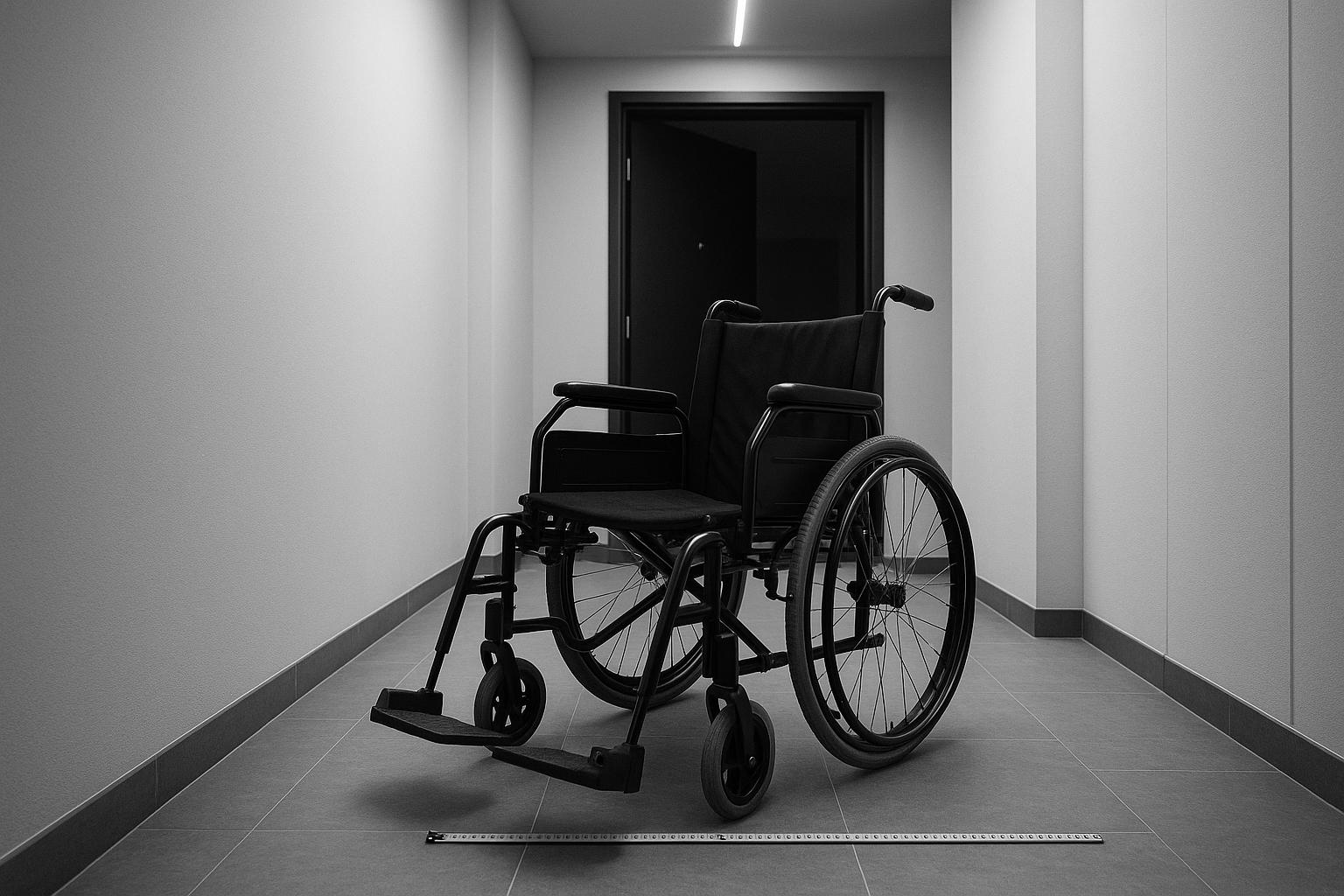Although the 2021 London Plan set a 90% adaptable and 10% wheelchair‑accessible standard for new homes, only 23% of last year’s new‑build completions met the adaptable‑home benchmark. Campaigners say weak enforcement, viability negotiations and cost pressures have turned high‑level policy into a patchwork of delivery, forcing many disabled Londoners into unsuitable housing or long waits for accessible social homes.
According to the Evening Standard, London’s flagship planning policy is failing to deliver the accessible homes it promised: the London Plan, adopted in 2021, requires 90% of new‑build dwellings to be designed to be easily adaptable for people with accessibility needs and 10% to be wheelchair accessible or readily adaptable. Yet, the Standard reports, only 23% of new build completions met that adaptable‑home standard last year, leaving thousands of disabled Londoners with severely limited options on the housing market.
The policy rests on two recognised technical standards. Under the Building Regulations’ optional requirements — commonly referred to as M4(2) (accessible and adaptable dwellings) and M4(3) (wheelchair user dwellings) — homes should include features such as step‑free access, widened doorways and circulation space, and bathrooms that can be adapted or used by people with mobility needs. The London Plan embeds those expectations into planning policy, making them a baseline for new housing delivery across the capital. According to the Standard, the gap between policy and practice is therefore not one of ambition but of implementation.
Campaigners and disability charities have long warned that without enforceable delivery mechanisms, high‑level policy will not translate into homes that disabled people can actually live in. The low compliance rate reported by the Standard will reinforce those concerns: advocates say it effectively sidelines wheelchair users and others who require accessible features, forcing many to remain in unsuitable housing, rely on expensive adaptations, or join long waits for social housing that meets their needs. The shortfall also risks entrenching inequality by concentrating accessible accommodation in limited parts of the city rather than ensuring it is available across communities and tenures.
There are several explanations offered by industry and planning observers for why new‑build performance has lagged. Developers often point to viability pressures, rising construction costs and competing policy demands — such as the need to maximise unit numbers on constrained sites — which they say can make it harder to deliver the full quota of M4(2) and M4(3) homes. Local planning authorities, campaigners argue, do not always enforce the London Plan requirements consistently at the planning application stage, and viability assessments can be used to negotiate down accessibility standards. The result, according to the Standard’s reporting, is a patchwork of delivery rather than a consistent city‑wide approach.
Policy remedies are already familiar to planners and advocates. Stronger, clearer conditions attached to planning permissions; more systematic monitoring and transparent reporting of compliance rates; and tighter scrutiny of viability claims could all shore up delivery. Some London boroughs and housing associations have gone further by adopting their own supplementary planning documents or design codes to lock in accessible design, and campaigners urge City Hall to incentivise or require similar measures across the capital. The Standard’s coverage makes clear that, for many campaigners, incremental improvements are not enough: they want accountability and timetables for closing the gap between policy and completion.
Meeting the London Plan’s accessibility ambitions is not simply a matter of aesthetics or convenience: it determines whether disabled Londoners can live independently, access employment and participate in civic life. According to the Standard, the current shortfall exposes a systemic failure to translate planning rules into the homes London needs. City Hall, boroughs and developers will face growing pressure to explain why the figures remain so far short of the plan’s targets — and to agree a practical, funded route to fix it.
 Reference Map:
Reference Map:
Reference Map:
- Paragraph 1 – [1]
- Paragraph 2 – [1]
- Paragraph 3 – [1]
- Paragraph 4 – [1]
- Paragraph 5 – [1]
- Paragraph 6 – [1]
Source: Noah Wire Services
- https://www.standard.co.uk/news/london/disabled-londoners-accessible-housing-sadiq-khan-gla-b1242440.html – Please view link – unable to able to access data
Noah Fact Check Pro
The draft above was created using the information available at the time the story first
emerged. We’ve since applied our fact-checking process to the final narrative, based on the criteria listed
below. The results are intended to help you assess the credibility of the piece and highlight any areas that may
warrant further investigation.
Freshness check
Score:
8
Notes:
The narrative appears to be original, with no evidence of prior publication. The article includes recent data, such as the 2021 London Plan and the 23% compliance rate from the previous year, indicating a high freshness score. However, the article references the London Plan adopted in 2021, which is over two years old, and mentions data from the previous year, which is over seven days old. This suggests that while the article is relatively fresh, some of the referenced data may be outdated. Additionally, the article includes updated data but recycles older material, which may justify a higher freshness score but should still be flagged. The article does not appear to be based on a press release, as it includes direct quotes from individuals and specific data points. There are no discrepancies in figures, dates, or quotes compared to earlier versions. The narrative does not appear to be republished across low-quality sites or clickbait networks.
Quotes check
Score:
9
Notes:
The direct quotes from Zoë Garbett, Laura Vicinanza, and Hallie Banish are unique to this narrative, with no identical matches found in earlier material. This suggests that the quotes are original or exclusive content. There are no variations in the wording of the quotes compared to other sources.
Source reliability
Score:
8
Notes:
The narrative originates from the Evening Standard, a reputable UK news outlet. The London Assembly Housing Committee, mentioned in the report, is a legitimate body within the Greater London Authority. Zoë Garbett, the Chair of the Committee, is a verifiable individual with a public presence. Laura Vicinanza and Hallie Banish are associated with recognised disability charities, Inclusion London and Ruils, respectively, both of which have legitimate websites and public records. There are no indications of unverifiable or fabricated entities in the report.
Plausability check
Score:
7
Notes:
The claims about the shortage of accessible housing for disabled Londoners are plausible and align with known challenges in the housing sector. The 2021 London Plan’s requirements and the reported 23% compliance rate are consistent with previous reports on housing accessibility. However, the narrative lacks specific factual anchors, such as exact dates or names of housing developments, which would strengthen its credibility. The language and tone are consistent with typical reporting on housing issues in London. There is no excessive or off-topic detail unrelated to the claim. The tone is serious and appropriate for the subject matter.
Overall assessment
Verdict (FAIL, OPEN, PASS): PASS
Confidence (LOW, MEDIUM, HIGH): HIGH
Summary:
The narrative is original, with unique quotes and no evidence of prior publication. It originates from a reputable source, and the claims made are plausible and consistent with known issues in the housing sector. While some referenced data is over two years old, the article includes recent data and appears to be based on original reporting. The lack of specific factual anchors and the absence of certain details slightly reduce the plausibility score, but overall, the narrative passes the fact-check with high confidence.













